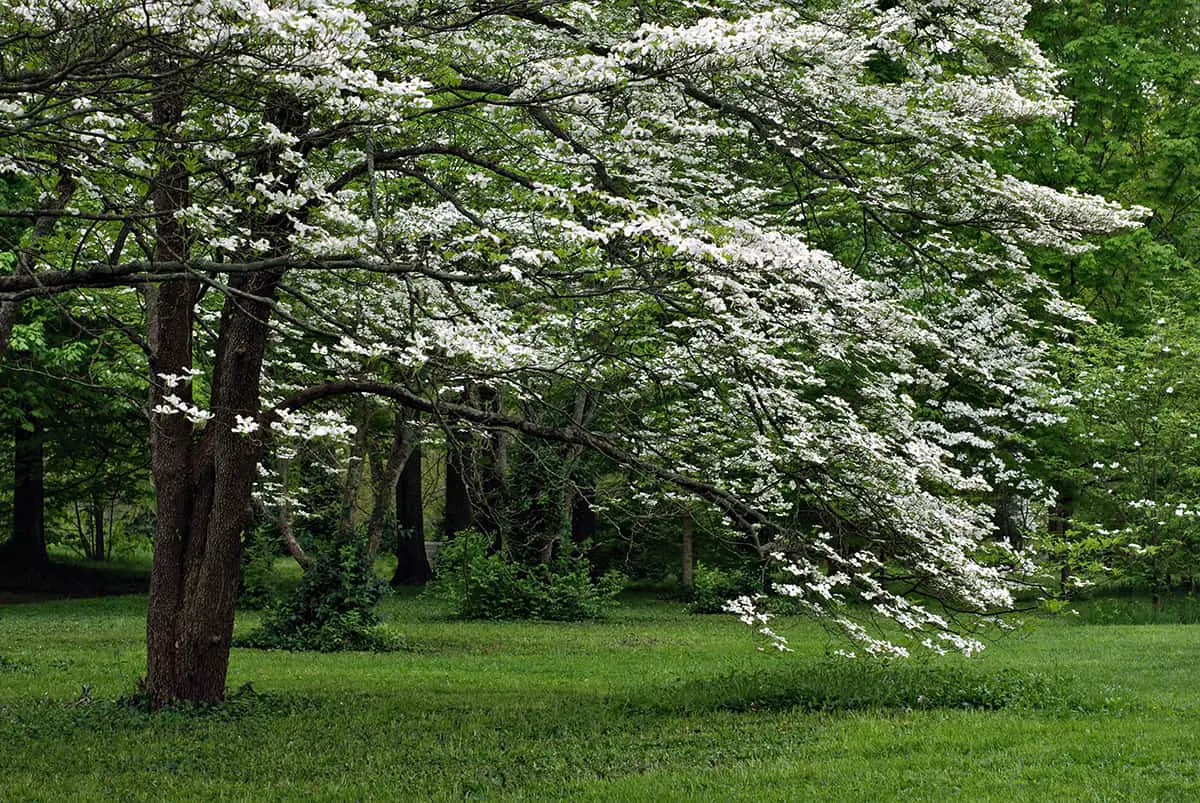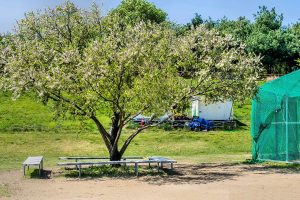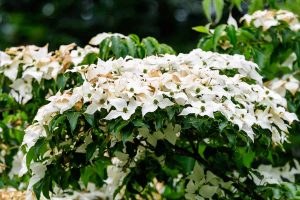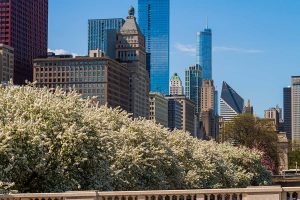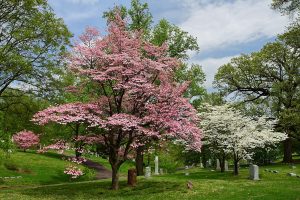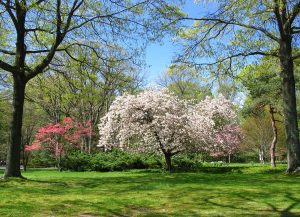The dogwood tree is at the center of a number of different legends, though their accuracy is questionable. What we do know about the dogwood is that it is referenced in the English language as early as 1614.
Throughout history, the tree has offered many uses, often as a type of medicine. Here we look at the various stories which surround the tree and how it has been used historically.
Table of Contents
The Dogwood Tree Name Origins
In the mid-1500s, the dogwood tree was widely known as the dagwood tree. This is because butchers used twigs from the tree to make dags to hold the meat. A dag was another name for what we would now call a skewer.
The name dagwood morphed into dogwood over time, possibly due to its use amongst people with different accents or dialects. This means that the dogwood tree literally translates into a skewer-wood tree.
The Dogwood Tree and Christianity

The dogwood tree is closely linked to the Christian faith and has come to symbolize Easter. Legend has it that the wood from a dogwood tree was used to make the cross upon which Jesus was crucified. The dogwood as we know it today would be unsuitable for making a human-sized cross because it does not grow straight and has crooked branches.
However, legend tells us that in the time of Jesus, the dogwood grew tall and straight, much like an oak tree. At this point in the legend, the story begins to differ depending on the source. Some say that Jesus cursed the dogwood tree so that it would never grow tall and straight again so that it could never be used in the making of a cross.
Others suggest that the dogwood tree felt so ashamed that it was used in the crucifixion, and Jesus took pity on it, promising that he would stunt its growth so that the dogwood would never again have to be used in such circumstances. The legend also tells us that Jesus blessed the dogwood tree with the ability to produce beautiful flowers which would bloom in time for Easter.
The white flowers would have four petals and be shaped like a cross, with a central cluster of tiny flowers that would represent the thorny crown Jesus wore. Many modern scientists dispute this legend, stating that dogwood trees would not have been in existence in Palestine during the time of Jesus and, therefore it could not have been used in the making of the cross.
French architect, Charles Rohault de Fleury, studied the known remaining fragments of the true cross in 1870 and concluded that it had been made from pine wood. Today, there is no definitive proof of what wood was used in the making of the cross, though some argue that elder, cypress or cedar was used.
The Dogwood Tree and Native Americans
The dogwood tree had many uses for Native Americans, who utilized the bark and roots for their medicinal properties. These parts of the tree were used in the making of medicines to aid digestion, and they were also used to create brown dyes. Some tribes, such as the Quileute and Makah, revered the dogwood tree as a symbol of good fortune, and they would eat dogwood berries at religious ceremonies to honor the tree.
Some tribes also associated the dogwood tree with masculinity, and as such, it was a fruit reserved only for men to eat. The Cherokee tribe were the indigenous people occupying the southwest United States, in areas today known as Georgia, Tennessee, Alabama, and the Carolinas.
Cherokee legend tells the story of a Cherokee princess who refused the advances of a suitor. He became overwhelmed with rage and killed the princess. The princess’s maiden was said to mop up her blood with the dogwood tree blossoms, and this is now reflected in the red-flowering dogwood which has petals flushed with red.
The Dogwood Tree and State Flower History
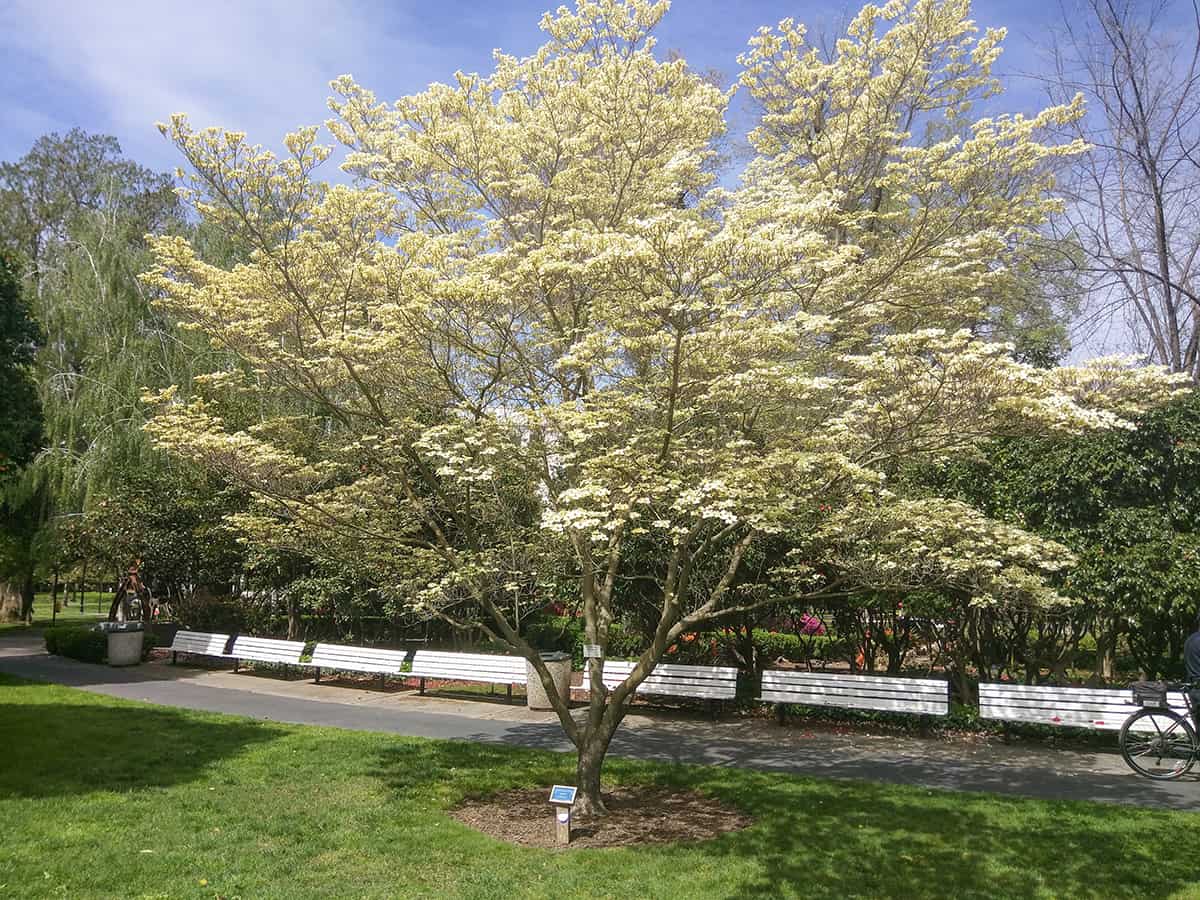
The dogwood tree is known to have been a favorite of Thomas Jefferson, the third US president and one of the Founding Fathers. He grew a number of these trees around his property in Monticello, Virginia, in the late 1700s.
In 1918, the state of Virginia chose the dogwood flower as its state flower, and later in 1956, it also adopted the dogwood tree as its state tree. The tree is also historically important to other states in the US. North Carolina named the dogwood flower as its state flower in 1941, and Missouri named the dogwood tree as its state tree in 1955.
The Dogwood Tree and Early US Settlers
Dogwood trees which grow natively in the US, were utilized by early settlers in a variety of ways. The wood of the dogwood tree is strong and hard yet easily workable. It was used to make items such as crochet hooks and knitting needles, mallets, hay forks, walking sticks, and forks and spoons.
Dogwood twigs also doubled up as earth toothbrushes. Early settlers would peel the bark from the dogwood twig, then bite down on the twig and move it around their mouths to clean their teeth.
The Dogwood Tree and Geography
There is a vast range of different types of dogwood trees which grow in different areas around the world, and as such, they can offer different meanings to different people. The Pacific Dogwood (Cornus nuttallii) and the Flowering Dogwood (Cornus florida) are native to North America, so when dogwood is referenced in US or Canadian history, it will typically be either of these dogwood species that are being discussed.
The Pacific Dogwood occupies a native region from western Canada in British Columbia down to the western United States in southern California. The Flowering Dogwood occupies the eastern side of North America, from Ontario in Canada, down the east coast of the US, and into Mexico. There are also a number of dogwood trees native to Asia, including the Kousa Dogwood (Cornus kousa) and the Tatarian Dogwood (Cornus alba).
Dogwood Tree Care
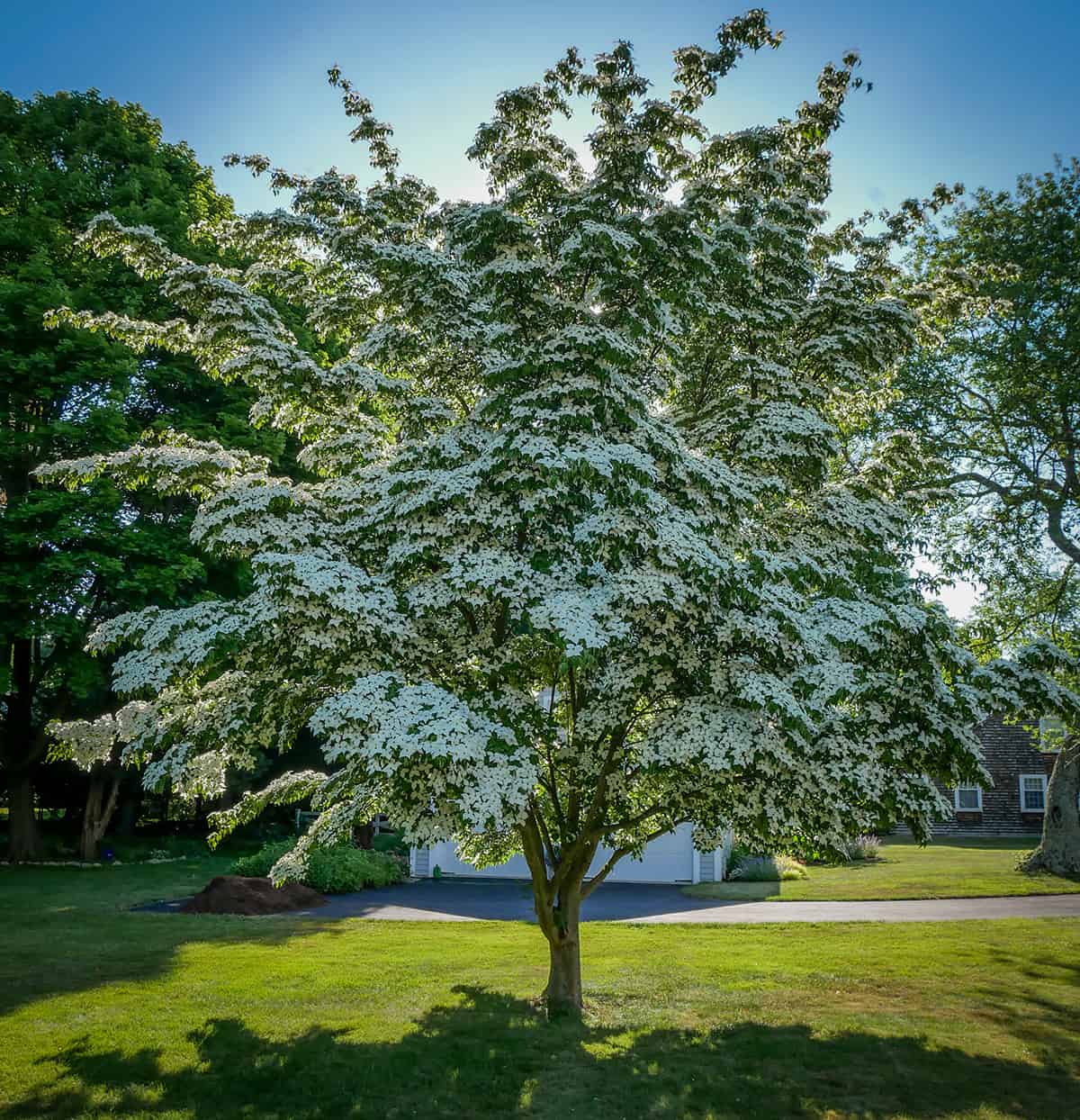
Light
Most dogwood trees thrive in a semi-sheltered position, where they can receive partial sun or partial shade. Many dogwood species are not tolerant of high levels of heat, so they will benefit from shade in the afternoon, especially in climates at the higher end of the USDA hardiness range. Some species of dogwood trees can tolerate deep levels of shade, however, this is not ideal.
Water
There are some dogwood trees which will tolerate periods of drought, and others which have a preference for wet soil, such as the Swamp Dogwood (Cornus foemina).
It’s important to know the type of dogwood you are dealing with so that you can adjust watering levels accordingly. Some dogwood trees, such as the Roughleaf Dogwood (Cornus drummondii) will struggle without generous moisture in the soil.
Temperature
There are types of dogwood trees that will fare well in most types of climates. The Tatarian Dogwood (Cornus alba) is a good choice for cooler climates because it is one of the hardiest dogwoods, suitable for growing in USDA hardiness zones 2 to 7. For warmer climates, the Swamp Dogwood (Cornus foemina) is ideal, as it is suitable for growing in USDA hardiness zones 6 to 10.
